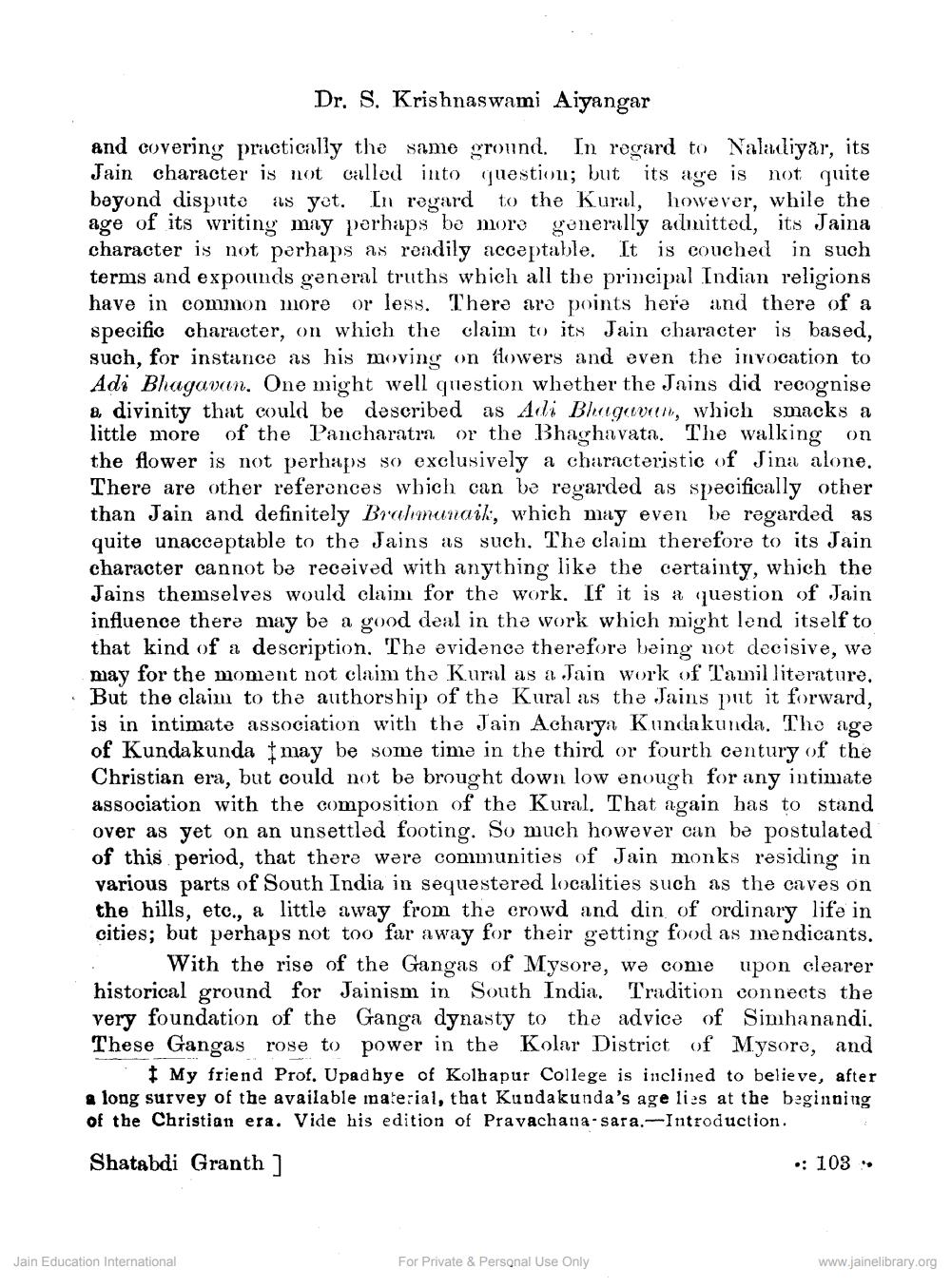________________
Dr. S. Krishnaswami Aiyangar
on
and covering practically the same ground. In regard to Naladiyar, its Jain character is not called into question; but its age is not quite beyond dispute as yet. In regard to the Kural, however, while the age of its writing may perhaps be more generally admitted, its Jaina character is not perhaps as readily acceptable. It is couched in such terms and expounds general truths which all the principal Indian religions have in common more or less. There are points here and there of a specific character, on which the claim to its Jain character is based, such, for instance as his moving on dowers and even the invocation to Adi Bhagavan. One might well question whether the Jains did recognise a divinity that could be described as Adi Bhagavan, which smacks a little more of the Pancharatra or the Bhaghavata. The walking the flower is not perhaps so exclusively a characteristic of Jina alone. There are other references which can be regarded as specifically other than Jain and definitely Brahmanaik, which may even be regarded as quite unacceptable to the Jains as such. The claim therefore to its Jain character cannot be received with anything like the certainty, which the Jains themselves would claim for the work. If it is a question of Jain influence there may be a good deal in the work which might lend itself to that kind of a description. The evidence therefore being not decisive, we may for the moment not claim the Kural as a Jain work of Tamil literature. But the claim to the authorship of the Kural as the Jains put it forward, is in intimate association with the Jain Acharya Kundakunda. The age of Kundakunda may be some time in the third or fourth century of the Christian era, but could not be brought down low enough for any intimate association with the composition of the Kural. That again has to stand over as yet on an unsettled footing. So much however can be postulated of this period, that there were communities of Jain monks residing in various parts of South India in sequestered localities such as the caves on the hills, etc., a little away from the crowd and din of ordinary life in cities; but perhaps not too far away for their getting food as mendicants.
With the rise of the Gangas of Mysore, we come upon clearer historical ground for Jainism in South India. Tradition connects the very foundation of the Ganga dynasty to the advice of Simhanandi. These Gangas rose to power in the Kolar District of Mysore, and My friend Prof. Upadhye of Kolhapur College is inclined to believe, after a long survey of the available material, that Kundakunda's age lies at the beginning
of the Christian era. Vide his edition of Pravachana-sara.-Introduction.
Shatabdi Granth]
Jain Education International
For Private & Personal Use Only
.: 103.
www.jainelibrary.org




